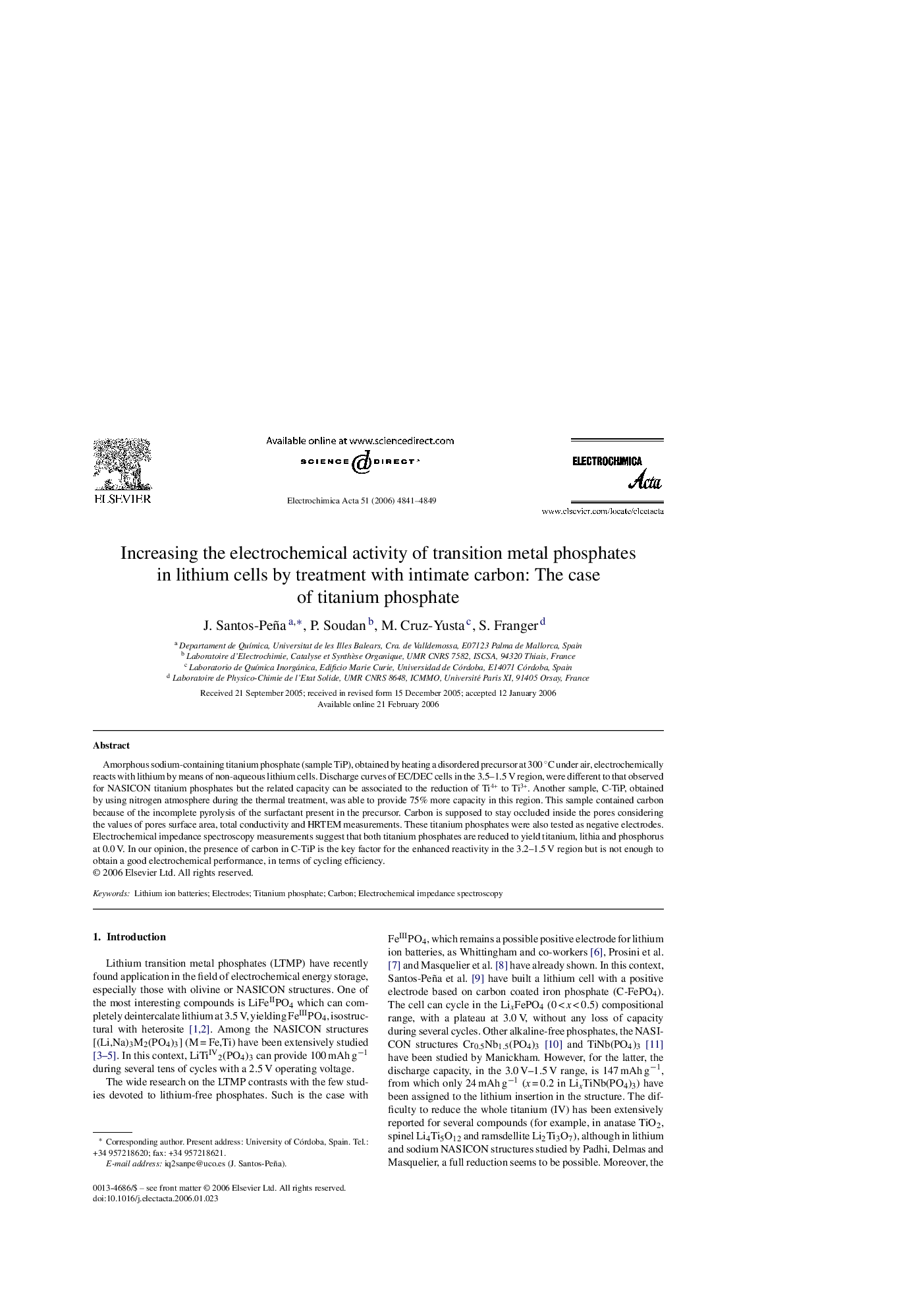| Article ID | Journal | Published Year | Pages | File Type |
|---|---|---|---|---|
| 195159 | Electrochimica Acta | 2006 | 9 Pages |
Amorphous sodium-containing titanium phosphate (sample TiP), obtained by heating a disordered precursor at 300 °C under air, electrochemically reacts with lithium by means of non-aqueous lithium cells. Discharge curves of EC/DEC cells in the 3.5–1.5 V region, were different to that observed for NASICON titanium phosphates but the related capacity can be associated to the reduction of Ti4+ to Ti3+. Another sample, C-TiP, obtained by using nitrogen atmosphere during the thermal treatment, was able to provide 75% more capacity in this region. This sample contained carbon because of the incomplete pyrolysis of the surfactant present in the precursor. Carbon is supposed to stay occluded inside the pores considering the values of pores surface area, total conductivity and HRTEM measurements. These titanium phosphates were also tested as negative electrodes. Electrochemical impedance spectroscopy measurements suggest that both titanium phosphates are reduced to yield titanium, lithia and phosphorus at 0.0 V. In our opinion, the presence of carbon in C-TiP is the key factor for the enhanced reactivity in the 3.2–1.5 V region but is not enough to obtain a good electrochemical performance, in terms of cycling efficiency.
